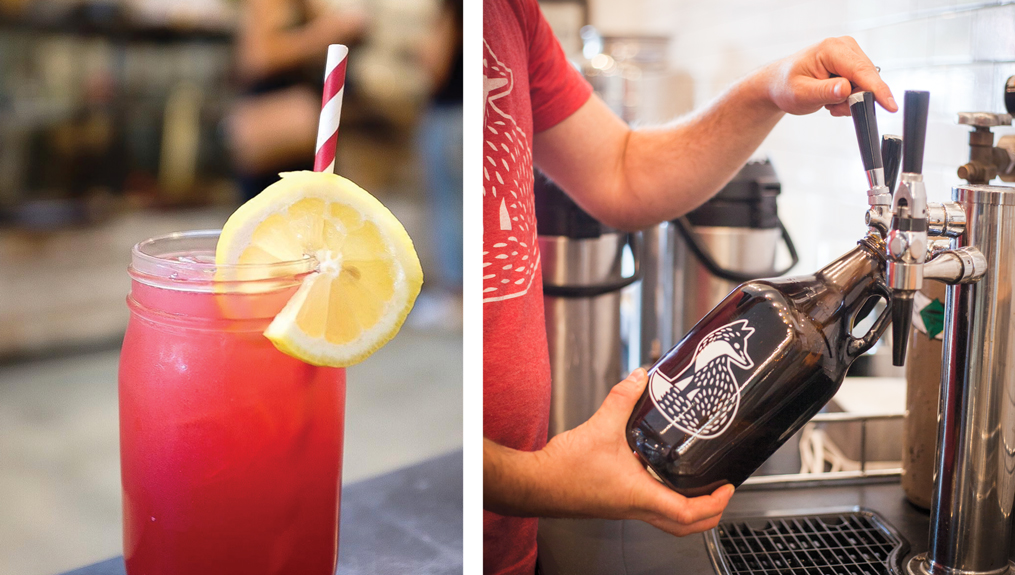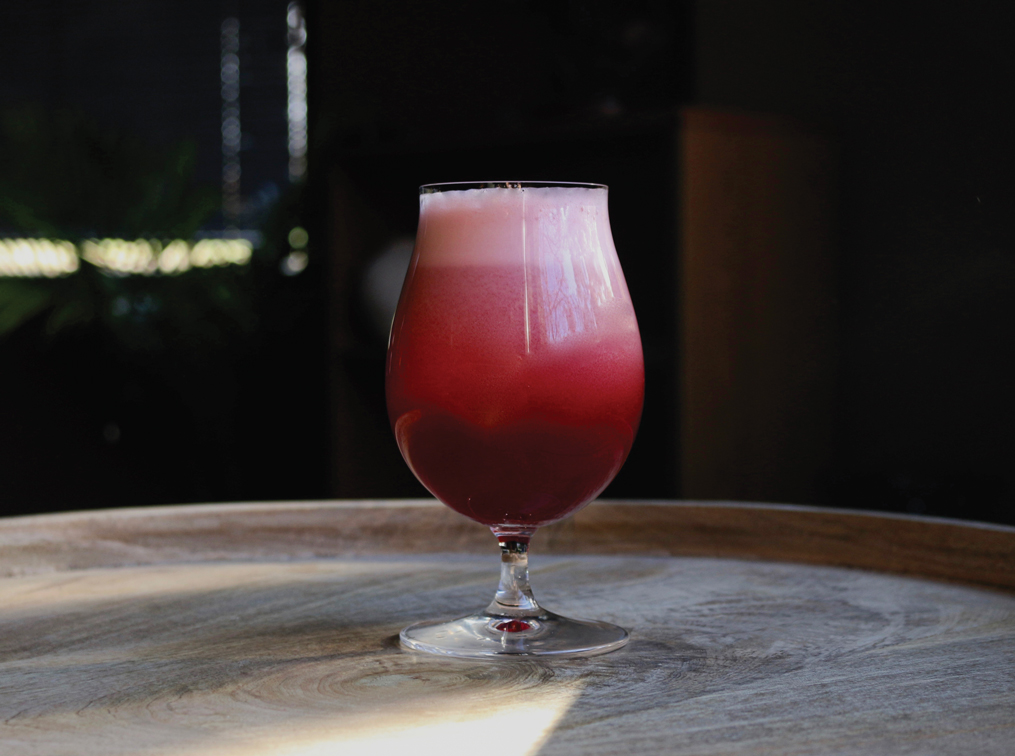While nitro cold brew has been available for several years, many customers are still discovering its creaminess and novelty. At the same time, more coffee shops are acquiring coffee-on-tap systems, and some are moving beyond nitro cold brew to include tea, kombucha, and other beverages on tap.
“You can keg anything,” says Shelby Van Slooten, director of marketing for Enhanced Beverage Solutions, which created the Nitro Infuser, a system that attaches to an existing tap line for cold brew coffee.
Java House Cold Brew Coffee in Carmel, Indiana, has served most of its beverages on tap, including coffee and tea, since opening in May 2019. “We don’t need an espresso machine to brew on-site,” says co-owner and operator Michael Moe. “It made sense with the products we have currently to serve from taps.”
If, for instance, someone orders a mocha, “you will dispense a couple of ounces of concentrate from the tap along with the mocha sauce,” explains Moe. “Someone will steam milk and mix.”

Fresh Cup talked to Moe and others about the benefits of beverages on tap.
Improve Efficiency
Perhaps the most obvious benefit is that pouring from a tap is faster than brewing espresso or pouring concentrate from a pitcher. “We can keep up with demand easier than if we had a standard coffee brewer,” says Moe. “We are more efficient, and everything is fresh over here for up to 14 days.”
Matt Carr, the owner of Washington, D.C.-based Little Red Fox, which offers cold brew coffee, kombucha, and beer on tap, agrees. “It’s a lot easier to serve,” he says. “It’s a lot more efficient on the register in terms of your movement. It’s physically efficient in the space. It’s easier to store [compared to one-gallon pitchers].” He notes that it’s also easier to clean the stainless steel interior of a keg versus washing pitchers.

Keg storage could be a barrier for operators with limited space, but because Little Red Fox also serves food, they can store kegs in the walk-in cooler. With a sixth-barrel keg size (the thinnest standard size), Carr estimates that they might change out the keg of cold brew five to six times per week in the summer and three to four times in the winter.
Since iced coffee is typically more popular in the summer, Van Slooten suggests kegging popular drinks such as iced caramel lattes. “Rather than putting that drink through an espresso machine, why not keg something similar like a cold brew oat milk caramel latte?” she says. “Now it’s on draft, it’s new and exciting, and it can be a special [menu offering]. Your speed of service goes up, which lightens up the work on the espresso machine.”
Chai, matcha, and other lattes can be served from a tap (milk included), but Van Slooten recommends using non-dairy options like oat milk to avoid spoilage and minimize special requests. “You can hit all audiences if you’re choosing the right milk alternative,” she says.
Reduce Waste
Draft systems can also have environmental benefits. For instance, Carr serves excess retail coffee on draft with nitro. “We pull all our retail and turn it into cold brew,” he says. “It’s a way to not waste coffee.” He adds that “sealing the kegs with the nitro gas helps preserve it as well.”
Draft system can also reduce packaging waste, “especially in a setting where everyone can bring their own reusable container,” says Deanne Gustafson, co-founder of Kombucha on Tap, which distributes beverages on tap in Southern California. Some cafés and grocery stores allow customers to fill growlers of cold brew, kombucha, or beer, which is another sustainable option.
Amp Up Visual Appeal
Beyond the operational perks of draft systems, draft coffee brings a “cool factor, kind of like a bar,” says Moe.
“Things that come from a tap often have that customer appeal that makes people want to take a picture of it and share it with their friend,” agrees Van Slooten. “Having tap handles can draw people in and get their attention pulled more toward whatever’s on tap.”
A common tap setup, where the barista faces customers while pouring drinks, provides an opportunity for more interaction, says Van Slooten. If a customer hasn’t tried nitro cold brew, seeing it in action can help pique curiosity. “They’ve never seen coffee look like this before, and all of a sudden they’re having a conversation with their barista, and they’re developing a relationship, and then they want to come back,” she says.
While it’s typically not efficient to make a small sample drink from an espresso machine, Van Slooten adds that cold brew on tap is easy to sample. “If you’re kegging something, you can easily say, ‘Have you had nitro cold brew? It’s creamier, it’s velvety, let me pour you a few ounces, and you can try it,’” she says.
Beyond nitro cold brew, nitro-infused tea is also gaining popularity.
“When tea enters the equation, you can infuse bright red things [for example] and draw in the visual appeal,” says Van Slooten.
CLEANING YOUR TAP SYSTEM
Once you introduce beverages on tap, you’ll need to clean your kegerator and other equipment regularly to ensure a consistent and safe product. To find out more, Fresh Cup talked to Isaac Cohen, vice president of marketing, and Kofi Amoako, technical director, both at Urnex, which makes cleaning products for espresso and coffee machines.
“For a closed system, regular cleaning of the dispensing valves and nozzle or faucet is crucial for maintaining a sanitary environment [and] preventing the buildup of yeast, mold, and bacteria,” says Amoako. “This regular cleaning assures that bacteria does not have the opportunity to reach levels that might cause off-flavors and shorten the shelf life of your drink. At a minimum, you should clean your tap lines and keg coupler once a week.”
Mix a food-grade cleaning solution with some water and run it through the system for 15 minutes. “Flush it out with water until it rinses clear,” says Cohen. “Usually, it’s a couple of times.”
Sanitization to kill bacteria follows a similar process using a food-grade sanitizer mixed with water, except it doesn’t require a rinse.
“If you’re brewing a batch of coffee, you don’t need to sanitize because the coffee is so hot, but cold liquid requires sanitization,” explains Cohen.
Changing out kegs is an excellent time to spray down the inside of the kegerator. Amoako also recommends cleaning and sanitizing tap lines between each keg.
“If they are not going to perform daily cleaning of the dispensing valve and nozzle, we advise cleaning with [equipment cleaning wipes],” he adds.
Provide A Sensory Experience
Beyond tempting the eyes, nitro-infused beverages also appeal to our senses of taste and smell. “Nitro gas makes drinks taste velvety and creamier,” says Van Slooten. “It’s the nitro bubbles dancing on your tongue.”
Nitro gas also forms a foamy head that can tantalize customers’ sense of smell. “One thing that’s vital about the head of that beverage is that it enhances the aromatics of your drink,” says Van Slooten. “They’re smelling things that they haven’t smelled before.
“Everything comes down to the theater of what the customer is experiencing,” she adds. “Customers want to be enticed by all of their senses.”
Cover photo by Josiah Davie.
This article was originally published on March 4, 2020 and has been updated to reflect Fresh Cup’s current editorial standards.

















